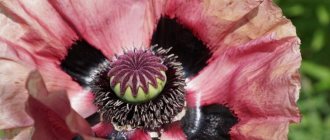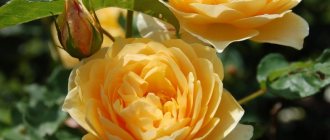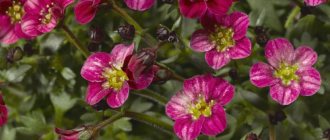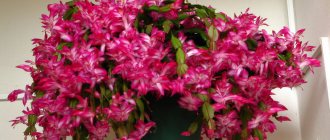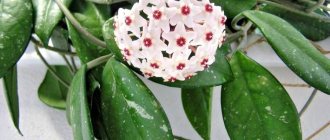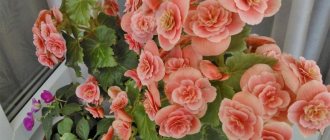The unusual and spectacular Celosia comb is a “fashionista” whose exotic beauty can decorate any flowerbed. The upper edge of its lush, velvety inflorescences is sinuous and shaped like a cockscomb, which gave the second, popular name to this amazing plant. The color of the numerous small flowers of Celosia comb varies widely from bright yellow to dark red, causing a strong association with flames. In its homeland in the warm weather conditions of southern Asia, it is a perennial crop, while in temperate countries it is more often grown as an annual ornamental plant.
Celosia comb looks great in the garden, grows well in pots and containers, and is also great for cutting and drying. Its flowering period lasts all summer and ends only with the onset of frost. Currently, a number of varieties of comb celosia are known, bred specifically for the needs of ornamental gardening.
Origin
The flower belongs to the Amaranthaceae family, which includes over 60 different plant species, which mostly grow in the southern hemisphere of the planet. Most of them were bred artificially, by crossing existing species.
In this way, it was possible to obtain species that can tolerate cold well.
Possible problems in growing
The list of factors threatening the health of a flower includes such standard factors as infections, parasites and poor conditions.
Chlorosis on celosia
Pests
Most of all, aphids love to feast on celosia, as they can quickly absorb a significant area of the flower. Among the products used to protect plants, the most popular are “Aktara”, “Aktellik”, “Inta-Vir”, “Iskra Bio” and “Fitoverm”. A simple solution consisting of 2 tsp is also effective. liquid soap, 2 tbsp. water and 1 tbsp. l. vegetable oil passed through cheesecloth.
Additional Information! The plant is treated in the evenings every 3 days.
Diseases
The most dangerous ailment of celosia is considered to be black leg, which is usually a consequence of waterlogging or watering on cloudy or cool days. It can be prevented by frequent loosening of the soil near the bushes. The areas of the plant affected by the disease are treated with antifungal agents such as “Skor”, “Strobi”, “Brunka” and “Topaz”. With this disease, the soil near the stem is loosened and mixed with ash, and watering is temporarily stopped. Sometimes replanting can help, but in advanced cases the plant is destroyed.
High acidity of the soil can cause chlorosis, which can be treated with products containing iron compounds.
Signs of improper care
The following symptoms may indicate a diseased state of the plant:
- withering;
- the dominance of insects under the leaves;
- blackening of the stem;
- curled foliage;
- yellow spots on the leaves or their blanching;
- thinning of the stem.
Planting in the soil
When choosing a place for sowing, it is best to give preference to a sunny area that is well protected from gusts of wind, as they can damage the plant. If the soil is heavy, it must be thoroughly loosened.
Celosia does not require special planting and care, although it responds positively to the addition of a small amount of humus before planting.
Transfer to open ground
Celosia seedlings are planted in a permanent place using the transshipment method along with a lump of soil in which the plants grew. You can replant starting from the second ten days of May, when there are no more frosts.
You may also be interested: 13 popular varieties of decorative onions with descriptions
The place for planting seedlings should be well-lit and protected from wind and drafts. The soil must be drained and not acidic; if necessary, it should be limed before planting. It is not recommended to add fresh organic fertilizers to the soil, since celosia does not tolerate them.
When growing low-growing varieties, the step between planting holes should be about 15 cm, in the case of tall varieties, at least 30-35 cm.
How to plant
Large and medium celosias are grown in a flower bed. In this case, the distance between them should be sufficient so that the flowers do not interfere with each other. Small varieties should be planted in the same way, but at a slightly smaller distance.
Celosia should be replanted in open ground at the beginning of summer, when the acclimatization process has completely passed.
Celosia comb in landscape design
Decorative annual plant is widely used in garden design. Typically, comb celosia is planted:
- in solo and multi-component flower beds;
Even miniature varieties of celosia attract attention during the flowering period - in curbs;
A low annual helps to clearly highlight the lines of paths and flower beds - along walls and fences.
Comb celosia decorates empty spaces and enlivens the landscape
The ornamental plant goes well with other crops in the garden. Grasses and conifers, labelia and marigolds successfully coexist with the annual plant.
Reproduction
The easiest way to propagate this flower is to use seeds. The thing is that when using the cutting method, the decorative appearance of the plant is greatly lost, and this is the primary goal.
Celosia must be grown from seeds at the end of the cold season, around March. At least in early spring. You need to sow with a certain gap between future plants, about a couple of cm.
Taking into account the fact that the seeds themselves are very small, there is no need to compact them after planting. It will be enough to simply scatter them on moistened soil, and then cover them with film to create the necessary conditions.
The first shoots can be observed almost seven days after planting. The film that covers the seeds can be removed only eight days after sowing.
Celosia. Planting and caring for the plant
Growing celosia is a favorite pastime of all gardeners. Because it is valued for its indescribable beauty, long-lasting flowering and very simple care. Even after flowering, the plant does not lose its decorative effect. The stems, shining in bright green, burgundy, red and bronze hues, remain a worthy addition to any flower garden.
Planting celosia begins with choosing a location and preparing the soil. The place should be sunny and necessarily protected from the wind. This plant loves slightly acidic and loose soil. Before planting celosia, you need to add a small amount of humus to the soil.
Celosia loves the sun and does not tolerate drafts
Beautiful purple celosia "comb"
Variegated paniculate celosias in a flowerbed
Growing celosia from seeds is the most convenient way to propagate the plant. Sowing seedlings can begin at the end of March. In this case, the seeds are not pressed into the soil, they are simply scattered over its moistened surface and covered with a film. In seven days the first shoots should appear.
Care
As soon as the plants grow, they need to be transplanted into small pots. You can make it easier and initially plant the seeds in small pots, so that in the future there will be no need to replant grown plants. Moreover, this will avoid damage to the roots when the time comes to transplant into open soil.
Young shoots must be well protected from sunlight. For this purpose, they can be covered with virtually anything.
The soil needs to be watered regularly; Celosia does not like drought. At the same time, you can’t overdo it with water either; the roots of the plant are very sensitive.
As soon as the plant is planted in open soil, it is necessary to gradually begin to introduce fertilizing.
Their frequency is approximately once every two weeks, in the form of a solution with mineral fertilizers. The ratio is approximately 15 grams per 5 liters of water.
Cutting and collecting seeds
In order to collect seeds from Celosia comb flowers that can be planted next year, you should do this:
- towards the end of the season, cut off several inflorescences that are already beginning to fade;
- place them in a container (without water) and leave them in a cool, dark room;
- Shake the dried inflorescences thoroughly over a table on which sheets of clean white paper are laid out;
- separate the seeds from the litter and place them in a thick paper bag or box for storage.
Diseases
Like all plants, the Celosia flower is susceptible to various kinds of diseases. Most often he suffers from “black leg”. It appears when watering is excessive and the roots begin to rot. You only need to water the flower on clear days; you don’t need to do this on cloudy days; rain will perform this function.
If the flower is already sick, you need to thoroughly loosen the soil, and then sprinkle wood ash on top so that it draws out moisture; watering should be slightly reduced.
Is it possible to do without seedlings?
Yes, but if we are talking about warm regions, where it is possible to create a suitable temperature so that the seeds germinate directly in the soil. After the seeds are scattered, they must not only be watered abundantly, but also covered with film, while maintaining a temperature of 23 degrees.
Types and varieties
Most of all, gardeners love only 2 types of this flower. It's all about their aesthetic appearance. It is worth understanding that according to the shape of the flowers, this plant is divided into 3 main groups: pinnate, comb, and spikelet.
Unusual Facts About Scallop Flowers
The flowerbed is the most common place where you can find this plant. But there are many other uses for celosia. Considering that it is related to an agricultural crop and at the same time being a super-ornamental plant, celosia is a very intriguing flower. So, a few unusual facts about this plant:
- By its essence and genus, amaranths, to which celosia belongs, are amaranths. It is cultivated as food and raw material for pharmaceuticals. Flour is made from its seeds. If you take a closer look at the grass that is perceived by many as a weed - acorn grass - you will see a striking resemblance to the species that are grown in flower beds.
- Scallops are perfectly preserved after cutting and can be classified as dried flowers , which florists use to create bouquets and displays.
- Celosia can be planted in a home pot and you can admire the bright scallop even in winter. However, the plant is annual .
- Some species of celosia are the size of a tall man. In one season you can get good shade by using this flower to shade some sunny places. The main thing is to water, otherwise it will not reach the desired height.
Photo of celosia
Total
Category: Flower beds and flower beds
How to grow on the plot?
Celosia can be grown through seedlings and direct sowing in open ground.
When is celosia planted for seedlings? Sowing seeds for seedlings is carried out in late March or early April.
The main points of planting seeds for seedlings:
- The seed material is pre-soaked for 3-4 hours in Epin and Zircon substances.
- Seeds are sown in soil made of soil and vermiculite. Do not lay them in a thick layer, without sprinkling them with earth, but pressing them to the soil and spraying them with water from a sprayer.
- You can plant in small plastic containers, which are covered with transparent film or glass. The containers are left on the windowsill, in the brightest room, at a temperature of 23-25 0C. However, you should not leave the seedlings in direct sunlight.
- About 14 days pass between the first shoot and sowing, at temperatures from +15 to +18 0C.
- When seedlings occur, seedlings emerge only after 3 months.
- Planting is also carried out only in established warm weather.
- To plant seedlings in the ground, you need to choose a non-rainy day, fertile soil and a separate, well-lit place.
Celosia comb - care features:
- Mineral fertilizing is carried out once a month.
- Abundant watering is carried out in the hottest time, but in rainy times, on the contrary, the flower does not need to be watered separately.
- It is not recommended to “overfeed” celosia with nitrogenous fertilizers, since the plant will begin to grow richly, but the buds will be small and faded.
It is imperative to remove weeds from the ground and dig up the soil.
Transplanting celosia is no different from other garden plants.
When transplanting seedlings into the soil, it is important to maintain the integrity of the root system. To do this, you can use “transshipment”
It is important to remember that low-growing varieties are planted at intervals of 15-20 cm from each other, and plants with tall stems - 25-30 cm. This process must be carried out at an already established positive temperature
Plant diseases:
- As for diseases and pests, their main problem is blackleg. It is manifested by blackening of the stem. If this “symptom” is detected, the soil must be loosened and sprinkled with wood ash. There is no need to water this bed during processing.
- Another problem with celosia is aphids. To combat it, use 2 teaspoons of liquid soap and a glass of sunflower oil dissolved in a glass of water. This solution is used 2-3 times per season, for several days every evening. Other diseases do not affect this flower.
Where is celosia planted?
It wouldn’t hurt to pay attention to the “neighbors” in the garden when choosing a location. So, when planting comb varieties, it is advisable to plant more “even” and “calm” flowers nearby, for example, daisies or something similar
So, when planting comb varieties, it is advisable to plant more “even” and “calm” flowers nearby, for example, daisies or something similar.
The unusual shape and color of the flower are perfect for creating unique flower beds and decorating borders.
Regarding the color scheme, you need to take into account that if the celosia petals are of a bright shade, then next to it it is worth planting some less juicy flower.
If it is necessary to obtain seeds in a faster way, then the flowers are suspended by the stems, and newspaper is placed under them. After complete drying and ripening, the seeds will begin to fall out on their own.
Celosia today can rarely be found in the beds of Russian gardeners.
Perhaps this is explained by the fact that this tropical flower is not yet very widely known.
However, a bush that resembles a sheaf of bright sparks will be a good addition to a flower bed in any garden.
Save the article on your favorite social network so as not to lose:
A few words about the flower and the reasons for loving it
Celosia has been known on our territory for centuries. In ancient times, it decorated flower beds along with evergreen periwinkle and perennial phlox. In the aramantha “genus” there are more than 60 varieties of celosia, many of them “came” from overseas countries - Africa, South America, Asia. And it is thanks to these species that European breeders today breed scallops of different heights (there are also low-growing varieties) with non-standard colors. Everyone intimately familiar with celosia likes:
- its long flowering compared to other annuals. It pleases with deep, voluminous color for a long time;
- ease of care and resistance to disease. All that remains is to choose a “company” of daisies, marigolds and tall salvia - and the flower garden pleases the eye all season, until frost;
Bright celosia
- the possibility of creating a herbarium and decorating the room even in the winter cold. The main thing is to cut the scallops in time and dry them properly so that they do not lose their color.
Attention! Many seed producing companies today offer varieties of low-growing celosia pinnate. When planting plants in a flowerbed, you should take into account their height (15-20 cm) so that they are not “crowded” by other flowers. The best option is the first row.
Temperature and watering
Although celosia is an unpretentious crop, it still needs some care after sowing and planting in the ground. Keep in mind that the plant is absolutely not compatible with high soil moisture and does not react well to drafts, so both the planting site and the watering schedule should be selected very carefully.
Figure 5. Watering the flower should be regular, but not too abundant.
The crop should be watered moderately, since celosia does not tolerate waterlogging of the soil, but does not develop actively enough when it dries out. Ideally, moisture is applied daily in the morning, but in too hot weather it is better to postpone the procedure to the evening. However, if there is natural precipitation, watering can be temporarily stopped.
Water for irrigation is also not quite ordinary. Firstly, it should not be hard, so it is advisable to let it settle, or use collected rainwater. Secondly, the liquid should not be cold. Use only ambient temperature water. Otherwise, the root system of the plants will experience severe shock and the flower will die, even if it has enough heat and light (Figure 5).
The charm of scallops in the garden, or the choice between seeds and seedlings
Undoubtedly, every amateur gardener wants to save money, so he prefers to sow the seeds himself in order to obtain seedlings. But few people take into account the need for proper and careful care at this time, as well as strict adherence to the rules of agricultural cultivation.
But those who decide to experiment on their own must take care of planting material. Undoubtedly, seeds can be sown after May 9 (when the threat of frost has passed) in open ground, in furrows with sand, and wait indefinitely for the result. Of course, everyone will wait for it, but such plants will not produce flowers until August. It makes sense? It makes no sense! Therefore, you need to either sow the seeds in a bowl early and grow celosia on the windowsill, or purchase ready-made seedlings.
Self-growing seedlings from seeds
The main thing here is to purchase good quality seeds. It is worth paying attention to professional seeds if you want to sow low-growing, variegated varieties. Otherwise, you can give preference to self-harvested varietal seeds, which will give excellent results.
Celosia is planted in a flowerbed as seedlings
We omit the optimal option for growing sprouts from seeds in a greenhouse, because all the conditions are there (lighting, temperature, humidity). We are considering the option of growing it on a windowsill. In both cases, the sowing deadline is March 15-20 in order to get flowering plants in mid-June to early July.
You need to start with:
- soil preparation. Ready-made soil mixture is good, but only slightly acidic. A good option is 3 parts black soil, 2 parts sand, 1 part humus. We compact the soil in a box or bowl and spill it moderately;
- sowing It is better to do this in rows, the distance between which is 2-3 cm. This will make it easier to thin out ready-made seedlings, to plant them, and to save on the number of seeds;
- creating a microclimate in a box or bowl. To do this, cover the container with film or glass and open it only for watering. After emergence of seedlings, remove the cover. An important point is temperature. The optimal indicator for rapid (7-10 days) germination of celosia seeds is 25-28C;
- Picking plants after they produce a couple of true leaves. Many people skip this stage, but it is this stage that makes the plant powerful, “confident” in itself, the root system developed, the plant strong and healthy;
- planting in open ground somewhere from May 15-20, after warm weather returns outside.
Attention! For picking, it is not necessary to use free-standing cups cut from a polyethylene sleeve or PET bottles. Cassettes for seedlings with different numbers of cells provide a minimum usable area, ease of care and use, and the root system without damage.
As easy as shelling pears, or buying ready-made celosia seedlings
If you are not confident in your sowing abilities, or want to decorate your flower beds with ready-made plants “here and now,” go to the market or a specialized store, flower farm or nursery. Here you will be offered ready-made seedlings, which consist of 1 plant, planted in a separate cup or pot. There are often cases when already flowering celosia is sold.
Planting celosia
This is a great option to choose the color you like and arrange the flowerbed as required by the flower arrangement. What remains to pay attention to is the fresh green color of the foliage, the powerful stem, and the developed (but not outdated!) root system. To do this, just turn the plant over, hold it, shaking the root out of the pot: if the roots are milky white, uniform, without rot, take it. Otherwise, refuse.
Attention! Both seeds and seedlings should be purchased from, “Kitano”, “Sakata” and the like. Then you can be sure of an excellent result; your efforts will not be in vain.
Sowing seeds
Step-by-step instructions for sowing celosia seeds for seedlings:
- Wear gloves to protect your hands from accidental contact with chemicals.
- Prepare a solution of Epin or another growth stimulant. To do this, add 1 drop of the drug to a glass of boiled water cooled to room temperature.
- Dip the seeds into the resulting solution and leave them in it for 3-4 hours.
- Place a layer of moss or vermiculite at the bottom of a wide container. This will provide good drainage.
- Then use a scoop to fill the container with the prepared soil. Leave about 2 cm to the top edge of the bowl.
- Distribute the seeds evenly over the surface of the soil. It’s convenient to place them with a toothpick: when wet, they stick to it themselves. With this method of planting, it is advisable to maintain a distance of 3 cm between seeds.
- Using your palms, lightly, almost effortlessly, press the seeds into the soil. There is no need to bury them.
- Moisten the soil with a sprayer. There is no need to pour water from the watering can: the flow of water will wash away the seeds and make them go deeper.
After this, cover the container with glass, film or a transparent bag. This is necessary to retain heat and moisture, which are so necessary for seed germination.
How to prepare seeds before planting
Despite their small size, the seeds are equipped with a very dense shell. It prevents their germination, so germination may be low. You can increase it if, before planting celosia, soak the seeds in a solution of Zircon or Epin. Thanks to these preparations, the seedlings will be stronger and more resistant to various diseases. What you need for growing
Growing seedlings begins with preparation. You will need:
- ready-made soil mixture;
- wide capacity;
- cup;
- seeds;
- trowel;
- gloves;
- sprayer;
- boiled and cooled water;
- Epin (or other growth stimulant);
- vermiculite or sphagnum;
- a sheet of glass, a transparent plastic bag or a piece of greenhouse film.
For accurate sowing, you will need a toothpick. But many gardeners make their work easier and do without it.
Features of growing celosia from seeds
Celosia is a plant that is very demanding in terms of growing conditions and requires competent and comprehensive care. Let's look at all the intricacies of growing indoors.
Planting a plant
As mentioned earlier, celosia only grows with enough sun, so the room for growing it should be just like that
Particular attention should also be paid to the choice of soil for planting. The best option is a soil mixture consisting of 2/3 loam, 1/3 leaf humus
It is also advisable to add a little sand and rotted manure. Don't forget to drain the soil well.
Before planting seeds, the soil should be slightly moistened with warm water. It is better to plant at the end of winter, and even better at the beginning of spring - March-April. A small layer of sphagnum moss is laid out at the bottom of the planting container, then the soil mixture is filled in. You should not load the soil to the edge - leave a couple of centimeters empty.
Celosia seeds
The seeds are immersed in a container with soil substrate to a shallow depth. You can even just scatter the seeds on the surface, since they are very small. You should not compact the soil on top of the seeds: they may simply not germinate. It is better to press them lightly into the soil.
Advice. Keep in mind that when planting celosia, the soil must be moistened, but under no circumstances pour water into the container in the traditional way: use a spray bottle.
Be sure to cover the seedlings with film or glass. At least once a day, the protective covering must be removed to remove condensation and ventilation. If the soil dries out excessively, lightly spray it with water. After 5-7 days, the first sprouts will appear. The film can be removed immediately.
Subtleties of caring for seedlings
When the sprouts reach 3 cm in height, you can plant them in separate pots and move them briefly to a very warm room. After some time, you can remove the plant to a cool environment and stop watering to allow the soil to dry completely. By doing this, you actively stimulate the flowering of celosia.
After this, you can safely transplant the young shoots into the main pots and return them to a warm place. Further care for celosia is very simple, but it must be done regularly. Remember, a plant can be destroyed only in two cases: if the temperature regime is not observed (no cold, temperature above 20 degrees) and if the soil is excessively moistened.
Speaking of moisture. Celosia loves moist soil, so watering should be regular and fairly generous, but do not overdo it if you do not want its root system to rot. It is better to water on the hottest days or when the flowers droop slightly.
Sufficient light is very important for celosia.
In the autumn-spring period, this plant needs fertilizing especially strongly, so try to add nutritious mineral mixtures diluted with water at least once every 3 weeks (at the rate of 15 g of fertilizer per 5 liters of water).
Celosia pinnata rarely gets sick, but sometimes this happens, especially at a “young” age, which is still quite immature. In this case we are talking about black leg, which can appear when the soil is over-moistened. Therefore, try to water the plant very carefully, early in the morning and only when the sun is shining. If you miss the moment and the plant gets sick, immediately loosen the soil, sprinkle it with ash and stop watering for a while.
As you can see, in general, celosia pinnate is not a particularly picky plant and if all the requirements for its cultivation are met, it will delight you with its luxurious flowering all year round. Good luck!
Protection from diseases and pests
Celosia grows quite successfully in the garden without additional protection from pests and diseases. However, it is still worth taking some measures to prevent the impact of these negative factors.
If we talk about diseases, then these flowers have a fairly high immunity against major pathologies. However, if the watering schedule is violated, the crop can still be affected by rot and fungal diseases, so you should not allow the soil to become waterlogged or skip loosening.
Aphids may also appear on plants. If you notice these insects, mix 200 ml of vegetable oil with two teaspoons of liquid soap, dilute the resulting mixture in two glasses of water and treat the plants. It is advisable to carry out the procedure in the evening so as not to cause leaf burn. Celosia is quite resistant to other pests and usually there are no problems with its cultivation.
You will find more information about this unusual plant in the video.
